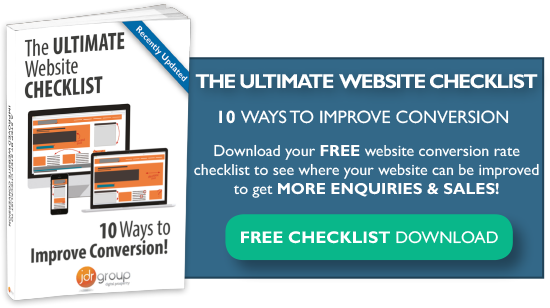3 Easy Steps To Improving Your Website Conversion Rates

A conversion is the practice of a lead 'converting' into a customer, whilst monitoring and understanding how your visitors interact with your digital campaigns and overall online presence. Any successful, or aspiring successful business owner should always have increased conversion rates as a goal to be constantly working towards and striving to improve. Because without customers, there is no business.
The type of conversions will vary from company to company depending on the nature of the product or service. Examples include actual sales, completing website enquiry forms and subscribing to your blog or newsletter.
Here are 3 Easy Steps To Improving Your Website Conversion Rates:
1) AB Testing
AB testing, otherwise known as 'split testing' is one of the top techniques for increasing conversion rates. All that is involved is simply comparing two different versions of a web page and seeing which performs better. The two versions will have one differing variant, this could be the featured image for example, and the performance is measured by the amount of conversions. 50% of your traffic will be directed to Variable A and the other 50% will be directed to Variable B. The variable which has the highest conversion rate is the winner therefore that is the featured image that you should use.
The return on investment at stake is big, with even the smallest of changes often resulting in significant growth in conversion rates, and ultimately sales. However, don't go into this all guns blazing and targeting anything, use your data from say Google Analytics and decipher it in order to know what to test on.
2) Value Propositions
When launching a new campaign, yes the font and images etc. are vital elements, however, a strong value proposition should be the first thing that comes to mind, just as it is the first thing that the customer will take into consideration.
According to invespcro.com, a killer value proposition has been proven to increase conversion rates by up to 90%! Ways to achieve this is by deeply understanding your target audience. Create buyer personas and segment your customers, as well as researching trigger words that have previously made an impact on the market you are targeting.
What defines a powerful value proposition? That would be the ability to let customers know what's in it for them, why they should purchase or use your services specifically, and why you are better than your competitors, in very few words. It's a tough one, but it's very much achievable. Especially if you have a key USP to focus on.
3) Sales Funnel
If you don't have a proper sales funnel in place, then it is probably a good time to implement one. The set of simple steps can be applied to any customer in any market in order to convert leads to customers. It allows you to cater for different prospects at any stage of the sales process.
Many people will be adamantly stuck in a 'just browsing' mindset and not ready to buy into any sale, therefore you'll need to slowly nurture them and reel them in by gaining trust and building a relationship.
The first stage of the funnel is about attracting potential customers and raising awareness of your brand. This can be done in many ways, one being through the content marketing technique of writing and sharing blog articles. These articles will go into detail of your expertise and what it is you do.
The second stage of the funnel is about stirring the prospects' interest in what you have to offer by making them aware of how your product and service will benefit them. What is in it for them?
Then finally, a 'Call-To-Action.' Examples of this could be a button on the website to download an eBook, or phone number to ring to book a consultation. Whatever it is, you are converting leads into customers and increasing your conversion rate.
Hopefully this article has helped inform you of a few tips on how to improve your conversion rates! If you have any queries, please comment below or call us on 01332 343281 for an informal chat.


